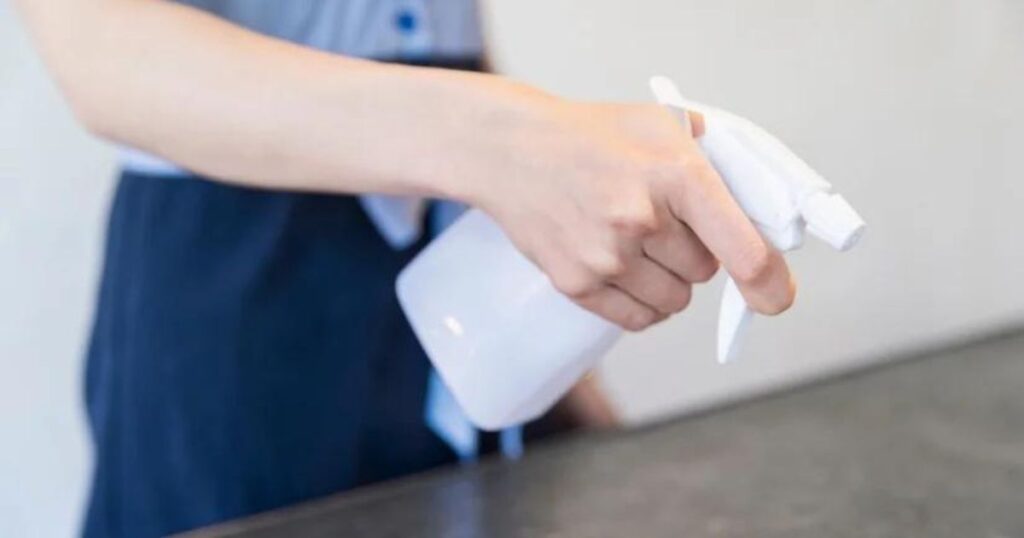If you’ve been around children or work in a school, you’ve probably encountered the dreaded topic of head lice. A common question that may arise is, ” Does Lysol kill lice.” However, understanding the efficacy of Lysol against lice requires a closer look at what these insects are and how they thrive.
In this blog, we will explore whether Lysol can be a part of your strategy to manage lice infestations effectively.
Table of Contents
Can Lice Live on Hard Surfaces?
Can lice live on hard surfaces like desks, chairs, floors, or toys? This question is crucial when considering the spread of lice within environments like schools and homes.
Lice primarily spread through direct head-to-head contact, but there’s concern about their viability on surfaces like furniture, hats, or pillows. Typically, head lice cannot survive long without a human host—they need to feed on blood several times daily and will generally not live beyond 24 to 48 hours on non-human surfaces.
This means that while the risk of transmission from a surface is low, it isn’t nonexistent, particularly within a short window after being detached from a host.
So Does Lysol Kill Lice?
When tackling the question of whether Lysol kills lice, it’s important to understand the limitations of such products. Lysol is known for its ability to disinfect surfaces and kill bacteria and viruses, but lice are a different challenge. The active ingredients in Lysol, such as ethanol and benzalkonium chloride, are not effective in killing lice or their eggs (nits).
They may temporarily immobilize these pests, but they do not resolve an infestation by killing them. For lice treatments, products specifically designed to target and kill lice and disrupt their life cycle are necessary.

Why Is Lysol Used To Kill Lice
Despite the ineffectiveness of Lysol in killing lice, it is still commonly used in attempts to manage lice outbreaks. The usage of Lysol and similar products stems from a misunderstanding of how lice are spread and a desire for a quick, all-encompassing solution. Cleaning with Lysol can help maintain general hygiene in a household or classroom, which is beneficial overall but not sufficient for treating lice.
When it comes to lice control, the focus should instead be on direct treatment of the infested individual and regular cleaning of personal items and bedding with appropriate methods that target lice specifically.
What Happens If You Don’t Get Rid of Lice in a Classroom?
Lice infestations in classrooms pose significant risks if not addressed quickly. Here’s what happens if you don’t get rid of lice in a school setting:
Spread of Infestation
The most immediate concern is the spread of infestation. Lice can quickly move from one individual to another through direct contact, which is common in close-knit environments like schools.
Without proper intervention, a single case of head lice can lead to a widespread problem affecting many students and potentially staff members, disrupting the educational process and causing significant distress among students and parents.
Spread to Personal Items and Clothing
Lice can also spread to personal items and clothing, such as hats, scarves, coats, and backpacks, which are often stored close together in schools. This mode of transmission can complicate efforts to control an outbreak, as it means that simply treating the hair might not be sufficient. Personal items must also be addressed to prevent re-infestation.
Increased Difficulty in Eradication
The longer lice are present in a classroom, the harder they become to eradicate. As lice multiply and their eggs hatch, treatments need to be more extensive and repeated. This ongoing cycle not only increases the effort and resources required to manage the infestation but also the likelihood of lice developing resistance to common over-the-counter treatments.
Need for Professional Intervention
If an infestation is not managed promptly and effectively, there may be a need for professional intervention. At The Lice Clinics, we can provide guaranteed and safe removal using specialized techniques and tools that are not typically available to the general public.

How to Kill Lice on Furniture and Desks
While they don’t live as long on furniture as they do on human heads, lice can still survive for some time on certain surfaces. Here’s how to kill lice on furniture and desks:
Chemical Treatments
When considering how long lice can live on furniture, it’s crucial to consider the use of chemical treatments. Products specifically designed for use on furniture can help eliminate lice without damaging the surfaces. It’s important to follow the manufacturer’s instructions carefully to ensure effectiveness and safety.
How to Tell If Lice Are Gone and Dead?
It is difficult to tell the difference between dead and dormant lice and nits. Continuous monitoring and proper combing are crucial to ensure complete elimination. To determine if lice are dead, it takes more than a single check. Below are some of the things you can watch for:
- No new nits: After treatment, carefully examine the hair for any new nits (eggs) being laid. Their absence is a good sign.
- No live lice: Several days after treatment, you shouldn’t see any adult lice moving around the scalp.
- Itching subsides: When both lice and eggs are eradicated, the intense itching will usually decrease significantly.
- Continuous checks: Even with successful treatment, some eggs may hatch, or re-infestation can occur. Regularly check the hair for several weeks to ensure the infestation is completely gone.

Who to Contact if a Lice Infestation Has Occurred
If you suspect or discover a lice infestation in your school or home, it’s important to act quickly. Contact The Lice Clinics for guidance and treatment. By addressing lice infestations promptly and thoroughly, we can help reduce the spread and impact of these pests in educational settings and beyond.
